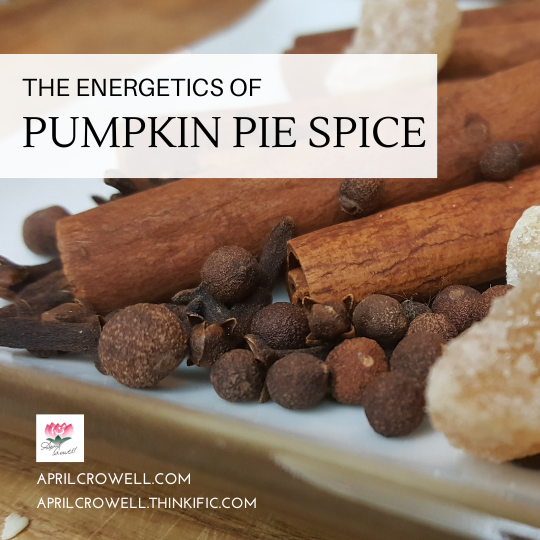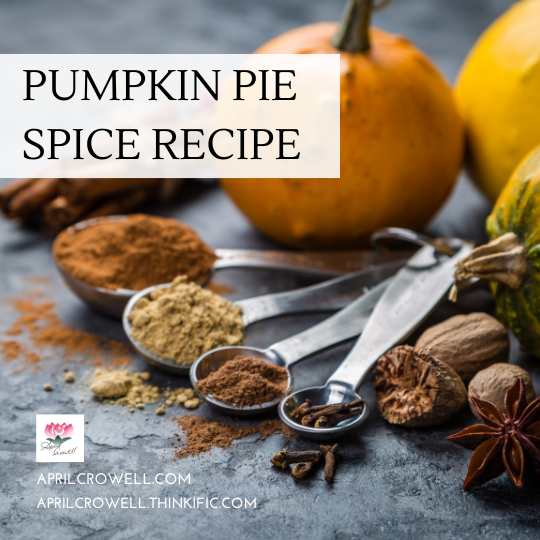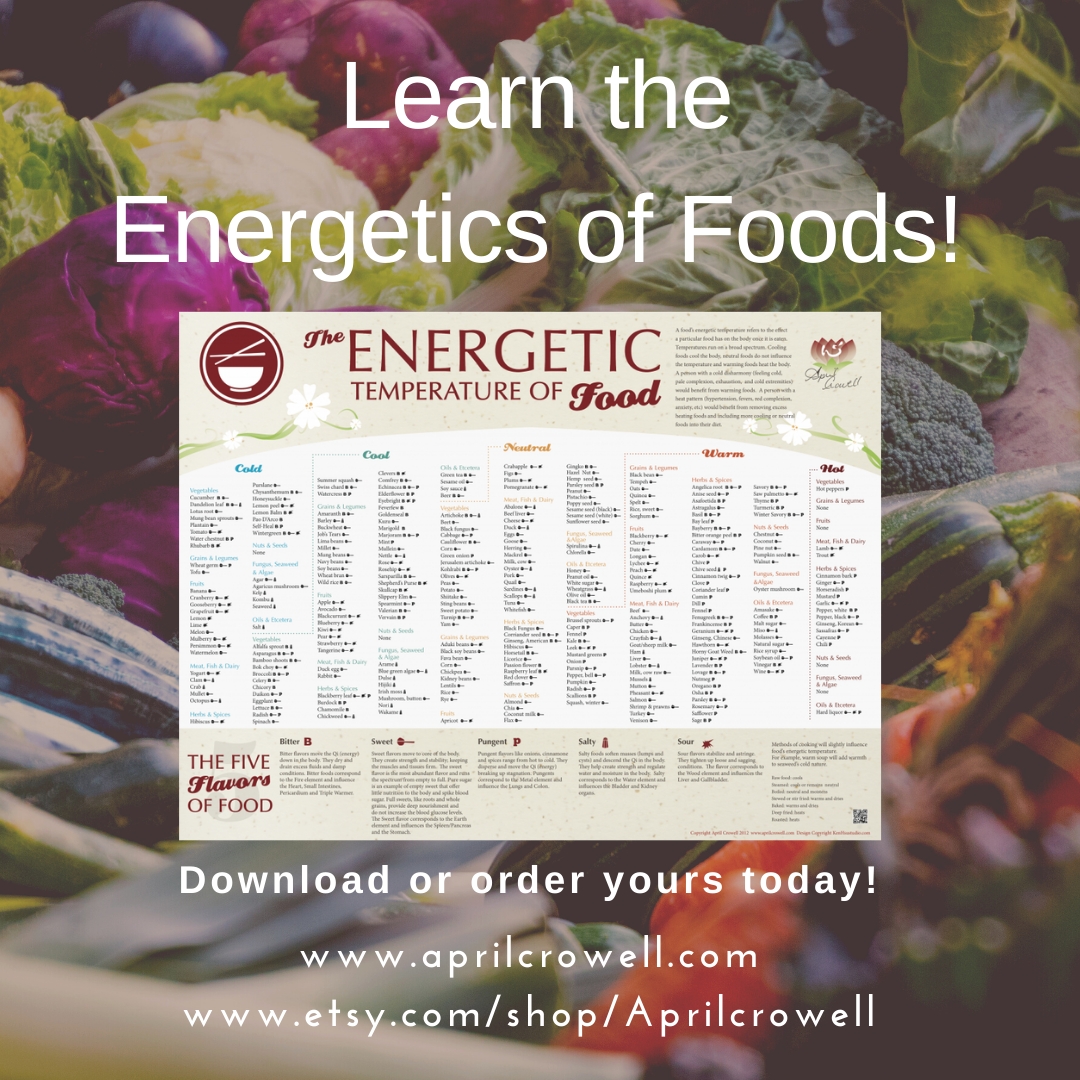The Energetics Of Pumpkin Pie Spice
Autumn is here which means pumpkins and pumpkin pie spice - which people either love or hate.
So what makes up the sweet warm combination that spice lovers seem to lose their collective minds over each fall? Let’s take a look.
If you buy pumpkin pie spice the usual combination is cinnamon, ginger, allspice, cloves and nutmeg. Some varieties may exclude either cloves or nutmeg…it’s all a preference thing. The average recipe combines the spices in a ratio with cinnamon as the dominate spice. For example: to 1 tsp. of cinnamon, you would add 1/2 tsp. of ginger, 1/2 tsp. of allspice and 1/4 tsp. of nutmeg and cloves each. Of course you are free to play with the measurements to your own liking. Personally, I like a little more nutmeg and may omit or reduce the allspice.
As with all foods, these spices all have medicinal and energetic properties that can be very beneficial. The sweet warm pungents are blessing in the colder months of Autumn and Winter.
Eastern nutritional energetics and healing properties
As a general group–all of the spices in pumpkin pie spice are warm/hot pungents, that are sweet and drying.
Promotes sweating, dispels wind, cold and damp and bolsters the immune system – These warm and hot pungents are all excellent at helping to fight off the onset of a cold or flu. They warm Lungs and strengthen the Wei Qi (your immune system) and drain excess phlegm.
Warms colds – Too much cold will collapse the Yang (warmth) of the body. Use these spices with any chronic cold condition from 4 Frigid Syndrome (cold hands and feet) to Reynaud’s and extreme cold invasion like hypothermia. Soaking in ginger infused baths is very helpful for extreme cold exposure.
Stimulates digestion, warms the middle burner – Cold and slow digestive systems benefit greatly from pumpkin pie spices. They all warm Spleen Yang, raise the metabolism, relieve gas, bloating, loose stools and diarrhea.
Relieves pain and stops cramping – Anywhere! Especially helpful with menstrual cramps, neck and shoulder pain. If the aching would feel better with the application of heat, internally warming herbs will be helpful.
Promotes menses – Slow, scanty, late or menses with cramps are caused by stagnation and obstruction of cold and are greatly relieved by the warmth of moving nature of spices in this mix, especially ginger and cinnamon.
Fights infection and poisons – Chronic infections and skin parasites.
Creates strength and builds Yang – Have you run yourself ragged? Burnt the candle at both ends? Yang deficiency shows up as fatigue, exhaustion, lack of warmth, chills, low immune system, weight gain, slowed digestion. Think adrenal fatigue or exhaustion, low thyroid, low libido and infertility. Check out When Yang Collapses for more details.
Astringes, drains phlegm, restores and solidifies – These spices help resolve leaking and sagging conditions that we see with chronic conditions like Fibromyalgia, Chronic Fatigue syndrome, diabetes, yeast, soft and flaccid muscles and excess mucus and damp.
Cinnamon bark – Cinnamomum, Gui Zhi– Cinnamon is pungent, astringing, sweet, hot and dry. It stimulates, astringes, restores and solidifies. Tonifies Yang, stimulates circulations, dispels cold and relieves chills. Enters the Heart and Lungs and creates strength. It’s a wise herb that we can actually use in conditions of both excess and deficiency and will help regulate blood, from moving it to stopping excess bleeding.
Ginger – Gingiber, Gan Jiang. Very pungent, slightly sweet, hot and dry. Ginger specifically enters the Lungs, Spleen, uterus, Stomach, digestive system and immune system. Ginger is an emenoguague (brings on the period) and blood thinner, so use with caution if you are pregnant or on blood thinners.
Allspice – Jamaican Pepper. Eugenia Pimenta. The unripened pimento berries native to central America, Mexico and the West Indies. Used to treat indigestion, muscle fatigue and aches, tooth aches and as a laxative.
Cloves – Syzgium aromaticum. Cloves come from an evergreen tree from South East Asia. Approved in Germany as a local anesthetic and antiseptic, they are famously known for their use in dental work. Can close the airways and damage soft tissue.
Nutmeg – Myristica fragrans. Grown in Malaysia and the Caribbean. Warm and sweet, it is the spice that shows up on eggnog in American’s diets, though it readily appears in sweets and meat in Asian and Italian cuisines. It holds pain relieving and aphrodisiac qualities.
Contraindications – All of the herbs in this combination are warm/hot, drying and stimulating. Use sparingly or avoid if you have a lot of heat, dryness, or Yin deficiency heat. Excessive use of any hot and drying herbs will exhaust the Qi and dry up the Yin and fluids in the body.
Simple and easy to make yourself, here’s my recipe.
Get Your Energetics Temperature of Foods Poster
Learn more about the 5 flavors and the energetic temperature of foods. Available in digital download ($22) or 18x24 in printed poster ($29).
Be warm!
April








